Introduction to Egyptian Gods and Goddesses
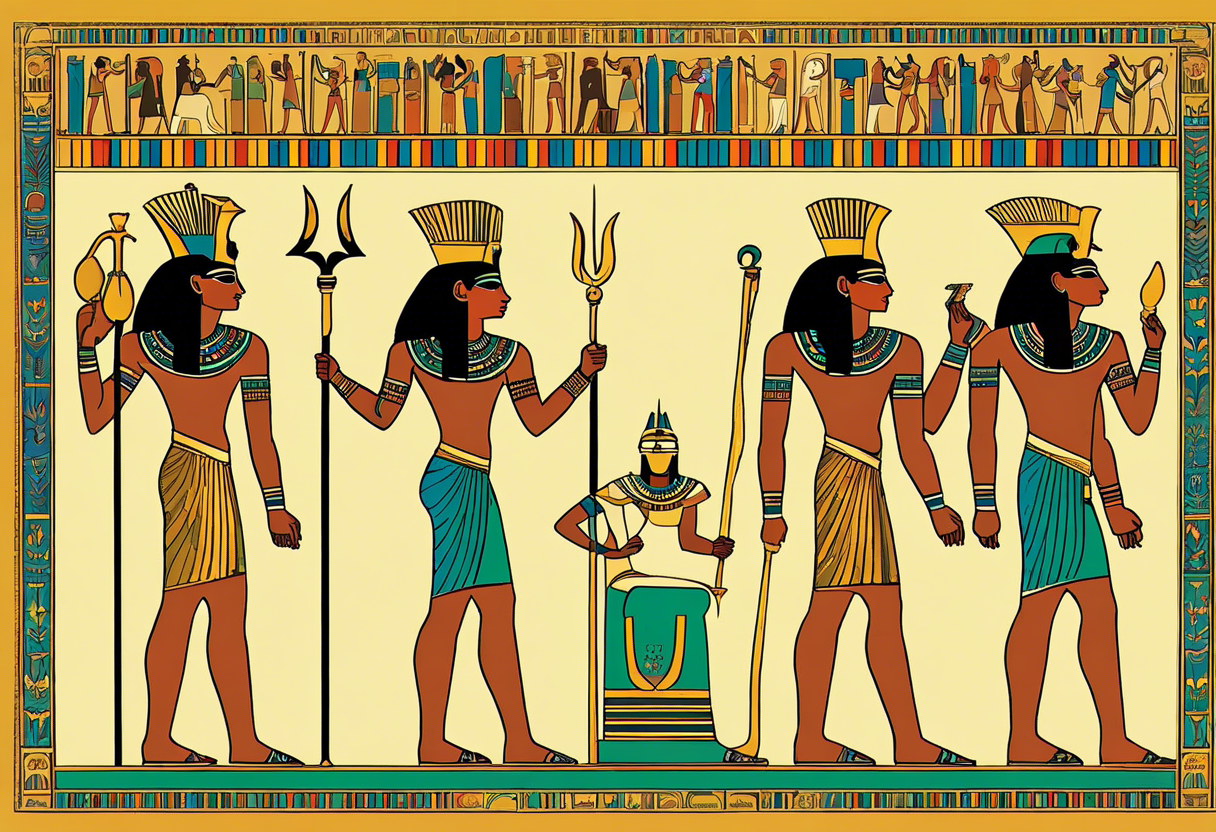
The ancient Egyptian civilization worshipped a vast pantheon of gods and goddesses, each with their own unique powers, characteristics, and legends. These deities played a central role in the daily lives of the Egyptians, influencing everything from agriculture and fertility to war and death. Understanding the Egyptian gods and goddesses is essential for comprehending the rich mythology and religious practices of this ancient civilization.
The ancient Egyptians believed that their gods and goddesses controlled all aspects of life and were responsible for maintaining order in the world. Each deity served a specific function, ruling over various domains such as the sun, the afterlife, love, wisdom, or music. Moreover, many gods and goddesses had multiple forms and associations, making the Egyptian pantheon complex and multifaceted.
At the heart of Egyptian mythology was the sun god Ra, considered the most important deity in the ancient Egyptian religion. Ra symbolized light, heat, and life, and was believed to travel across the sky on his solar barge. He also had a fierce aspect known as Ra the Destroyer, who waged battle against the forces of chaos.
Isis, the goddess of magic and healing, was another prominent figure in the Egyptian pantheon. She was revered as the mother goddess and the wife of Osiris, the god of the afterlife. Isis played a crucial role in the resurrection of Osiris and was often depicted with outstretched wings.
Other notable gods and goddesses in the Egyptian pantheon include Osiris, the god of the afterlife and judge of souls; Horus, the falcon-headed god of sky and kingship; Hathor, the goddess of love, music, and beauty; Thoth, the god of wisdom and writing; and Bastet, the lioness-headed goddess of protection.
The worship of these deities involved elaborate rituals, offerings, and ceremonies conducted in temples throughout ancient Egypt. The Egyptians believed that by appeasing and honoring the gods and goddesses, they could ensure divine favor and protection. The temples were not only places of worship but also centers of community life, education, and economic activity.
The mythology and religious practices of the ancient Egyptian civilization provide valuable insights into their values, beliefs, and worldview. Exploring the stories and symbolism associated with the Egyptian gods and goddesses allows us to delve into the fascinating world of this ancient civilization and gain a deeper understanding of their culture and society.
The Major Egyptian Gods
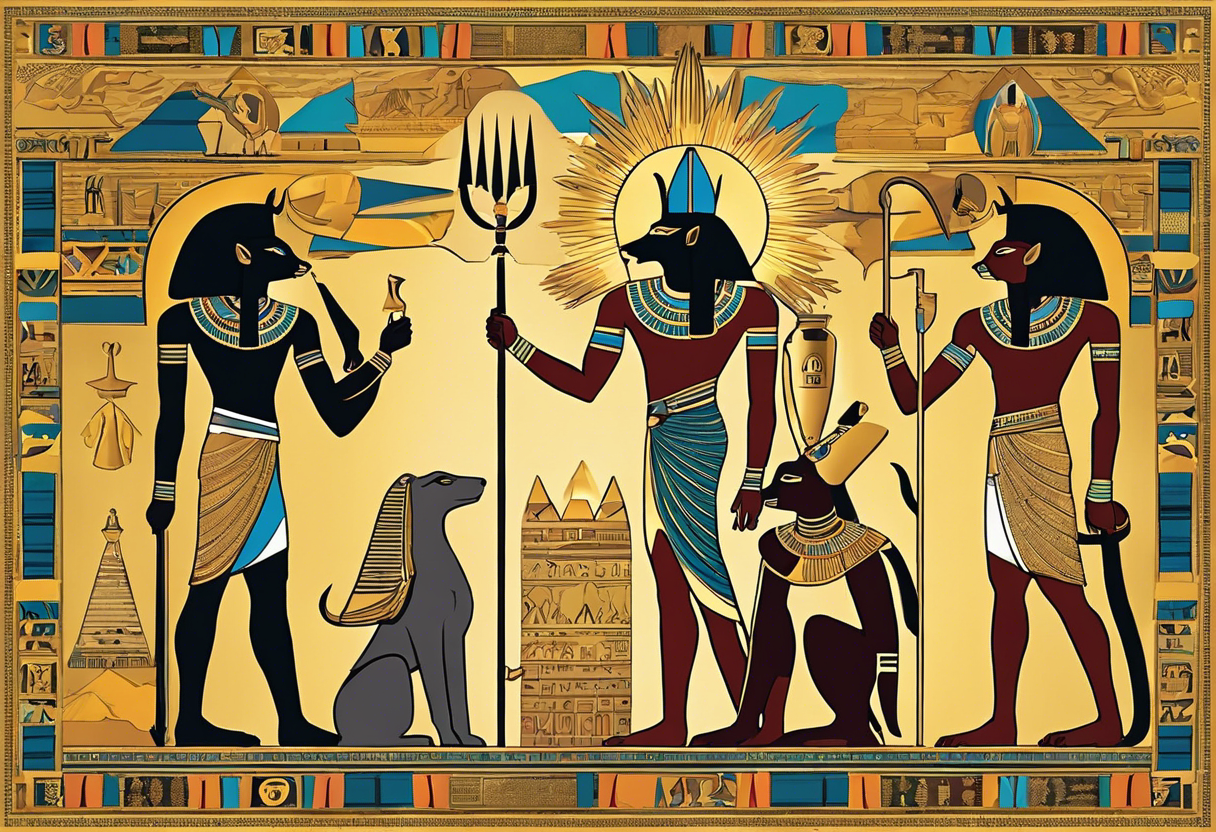
In ancient Egyptian mythology, there were several major gods who played significant roles in shaping the universe and the daily lives of the people. These deities were worshipped and revered throughout the civilization's long history. Here are some of the most prominent gods and goddesses in the ancient Egyptian pantheon:
Ra - The sun god and the ruler of the gods. Ra was often depicted as a man with the head of a falcon, wearing a sun disk on his head. He was believed to travel across the sky during the day, providing light and warmth to the world. Ra was also associated with creation and was considered the father of all other gods.
Isis - The goddess of magic and fertility. Isis was portrayed as a woman wearing a throne-shaped headdress with a solar disk on her head. She was known for her protective and nurturing nature, and she played a crucial role in the resurrection and protection of Osiris, her husband and the god of the afterlife.
Osiris - The god of the afterlife and the ruler of the underworld. Osiris was depicted as a mummified figure wearing a white crown. He was responsible for judging the souls of the deceased and ensuring their journey to the afterlife. Osiris also represented rebirth and fertility, as he was believed to have been resurrected after being killed by his brother Seth.
Horus - The god of the sky and kingship. Horus was often depicted as a falcon-headed man or as a falcon itself. He was seen as the embodiment of divine kingship and was believed to protect the pharaoh and the Egyptian people. Horus was also associated with the sun and was considered the son of Osiris and Isis.
Thoth - The god of wisdom and writing. Thoth was portrayed as a man with the head of an ibis or a baboon. He was believed to have invented writing and was the patron god of scribes and scholars. Thoth also played a crucial role in maintaining order and balance in the universe.
Anubis - The god of embalming and the afterlife. Anubis was often depicted as a jackal-headed man or as a full jackal. He was responsible for guiding souls to the afterlife and was seen as the protector of tombs and cemeteries. Anubis was also associated with mummification and the process of preserving the bodies of the deceased.
These are just a few of the major gods in the ancient Egyptian pantheon. Each deity had their own unique attributes, symbolism, and rituals associated with them. Their worship and belief played a fundamental role in the daily lives and religious practices of the ancient Egyptian people.
The Major Egyptian Goddesses

The ancient Egyptian pantheon is replete with a multitude of divine beings, including many powerful goddesses who played significant roles in their mythology and cult practices. These goddesses were not only worshipped, but they also embodied various aspects of life, nature, and the divine feminine. Here, we will explore some of the major Egyptian goddesses and delve into their significance in Egyptian culture.
Isis
Isis, also known as Aset, is one of the most important and widely revered goddesses in ancient Egypt. She is often depicted as a woman wearing a throne-shaped headdress or a sun disk and cow horns. Isis was considered the goddess of motherhood, magic, fertility, and healing. She was also associated with the afterlife and was believed to be the divine protector of the pharaohs. With her husband Osiris and their son Horus, Isis formed a central part of the Osirian myth cycle, which emphasized themes of death, rebirth, and resurrection.
Hathor
Hathor, known as "The Great One of Many Names," was a multifaceted goddess associated with love, beauty, music, dance, femininity, and joy. She was often depicted as a cow or as a woman with cow horns and a sun disk. Hathor was seen as the nurturing and protective mother figure, associated with the annual flooding of the Nile River, which brought fertility and abundance to the land. She was also connected to the afterlife and was believed to guide souls to the realm of the dead.
Bastet
Bastet, also known as Bast, was a goddess associated with protection, fertility, joy, and warfare, as well as domesticity and the home. She was often depicted as a lioness or as a woman with the head of a lioness or domestic cat. Bastet was especially popular during the Late and Ptolemaic periods in Egypt, and her cult center was located in the city of Bubastis. She was believed to possess a fiercely protective nature and was often invoked for her ability to ward off evil and bring blessings to her worshippers.
Sekhmet
Sekhmet, whose name means "The Powerful One," was a lioness-headed goddess associated with war, healing, and protection. She was often depicted as a lioness or as a woman with the head of a lioness. Sekhmet was believed to be a fierce warrior who could unleash her wrath upon enemies, but she was also known for her healing abilities. In some myths, she was considered a form of the sun goddess, embodying the destructive power of the sun's rays. Sekhmet was both feared and revered, and her cult was particularly prominent during the New Kingdom period.
Nut
Nut, the goddess of the sky and heavens, was depicted as a woman arched over the earth, with her body adorned with stars. She was considered the mother of the gods and was believed to give birth to the sun each day. Nut was associated with the cycle of life and death, as well as with rebirth and renewal. She was also seen as the protector of the deceased, embracing them in her arms and providing them a safe passage to the afterlife.
These are just a few examples of the major goddesses in ancient Egyptian mythology. Each goddess represents different aspects of life and the divine, and their worship played a vital role in the religious beliefs and practices of the ancient Egyptians. They continue to captivate our imagination and provide insights into the rich and complex culture of ancient Egypt.
Lesser-Known Egyptian Deities
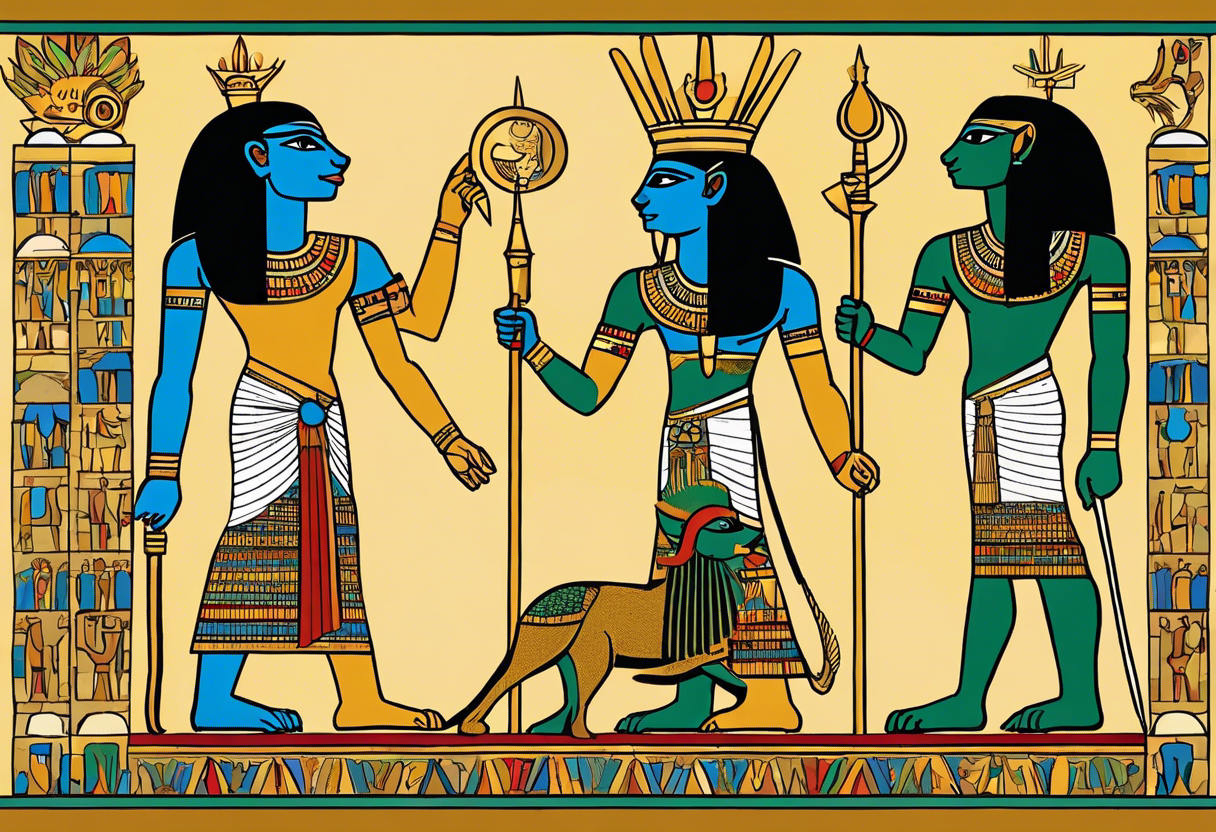
In addition to the well-known gods and goddesses of ancient Egypt such as Ra, Isis, and Osiris, there are several lesser-known deities that played significant roles in Egyptian mythology and religious beliefs. These lesser-known deities offer fascinating insights into the complex pantheon of ancient Egypt.
1. Taweret
Taweret is a goddess associated with childbirth and fertility. Depicted as a female hippopotamus standing upright with human breasts and the tail of a crocodile, she was believed to protect pregnant women and their unborn babies. Taweret was also considered a guardian of the underworld and was often portrayed in the form of amulets and figurines placed in tombs.
2. Bes
Bes was a dwarf deity known for his role in protecting households, particularly against evil spirits. He was often depicted as a bearded, lion-headed dwarf wearing a plumed headdress. Bes was also associated with music, dance, and fertility. His presence was believed to bring joy and protection to families, and images of Bes were frequently included in household items to ward off evil.
3. Hathor
Hathor is a goddess associated with love, beauty, and fertility. She was often depicted as a cow or as a woman with the ears of a cow wearing a sun disk on her head. Hathor was revered as the embodiment of maternal love, and she was also considered a protector of the dead and a guide for the souls in the afterlife. She played a significant role in the Egyptian concept of rebirth and was closely associated with the goddess Isis.
4. Khnum
Khnum is a ram-headed god associated with creation and the life-giving waters of the Nile River. He was believed to have created humans by molding them from clay on his potter's wheel. Khnum was also considered a protector of the Nile and its annual flood, which was crucial for agriculture. He was often depicted with a potter's wheel or as a ram-headed man wearing a crown adorned with two tall plumes.
5. Sekhmet
Sekhmet is a lion-headed goddess associated with war, destruction, and healing. She was believed to be the daughter of Ra and was often called upon to protect the pharaoh and fight against his enemies. Sekhmet was also associated with epidemics and illnesses, and it was believed that she could cause or cure them. She was often depicted as a lioness or as a woman with the head of a lioness, wearing a solar disk and a uraeus.
These lesser-known Egyptian deities played vital roles in the religious and mythological beliefs of ancient Egypt. Their unique characteristics and associations offer valuable insights into the diverse and complex nature of ancient Egyptian culture and spirituality.
The Role of Gods and Goddesses in Egyptian Society

The role of gods and goddesses in Egyptian society was of utmost importance. Ancient Egyptians believed that the gods and goddesses ruled over every aspect of their daily lives, from the Nile River and agriculture to marriage and fertility. These deities were considered to be all-powerful and were believed to have control over both the natural and supernatural worlds.
The Egyptians worshipped a vast pantheon of gods and goddesses, each with their own specific roles and attributes. These deities were believed to possess human-like qualities and emotions, making them relatable to the people. They were seen as intermediaries between the mortal world and the divine realm, and it was believed that they could influence and intervene in human affairs.
One of the primary roles of the gods and goddesses in Egyptian society was to maintain order and harmony. The Egyptians believed that the universe was governed by ma'at, the concept of universal balance and harmony. The gods and goddesses were responsible for upholding ma'at and ensuring that everything functioned smoothly. They were believed to possess the power to reward the virtuous and punish the wicked, thereby maintaining order in society.
In addition to their role as guardians of ma'at, the gods and goddesses played a crucial part in various aspects of everyday life. For example, Osiris, the god of the afterlife, was worshipped for his role in ensuring a peaceful transition to the next world. Hathor, the goddess of love and beauty, was revered for her ability to bring joy and happiness to people's lives.
The gods and goddesses also played a crucial role in the divine protection of Egypt. The pharaohs, who were believed to be the earthly embodiment of the gods, sought their guidance and protection in times of war and conflict. Egyptian rulers built grand temples dedicated to the gods and goddesses and performed elaborate rituals to honor and appease them.
Overall, the gods and goddesses held a central position in Egyptian society. Their influence extended to all aspects of life, from religious practices and rituals to societal governance and personal life. The Egyptians viewed them as benevolent beings who held the power to shape their destiny and ensure their well-being. Worshipping these deities and seeking their favor was an essential part of ancient Egyptian society, providing a sense of security and guidance to its people.
The Symbolism and Iconography of Egyptian Deities
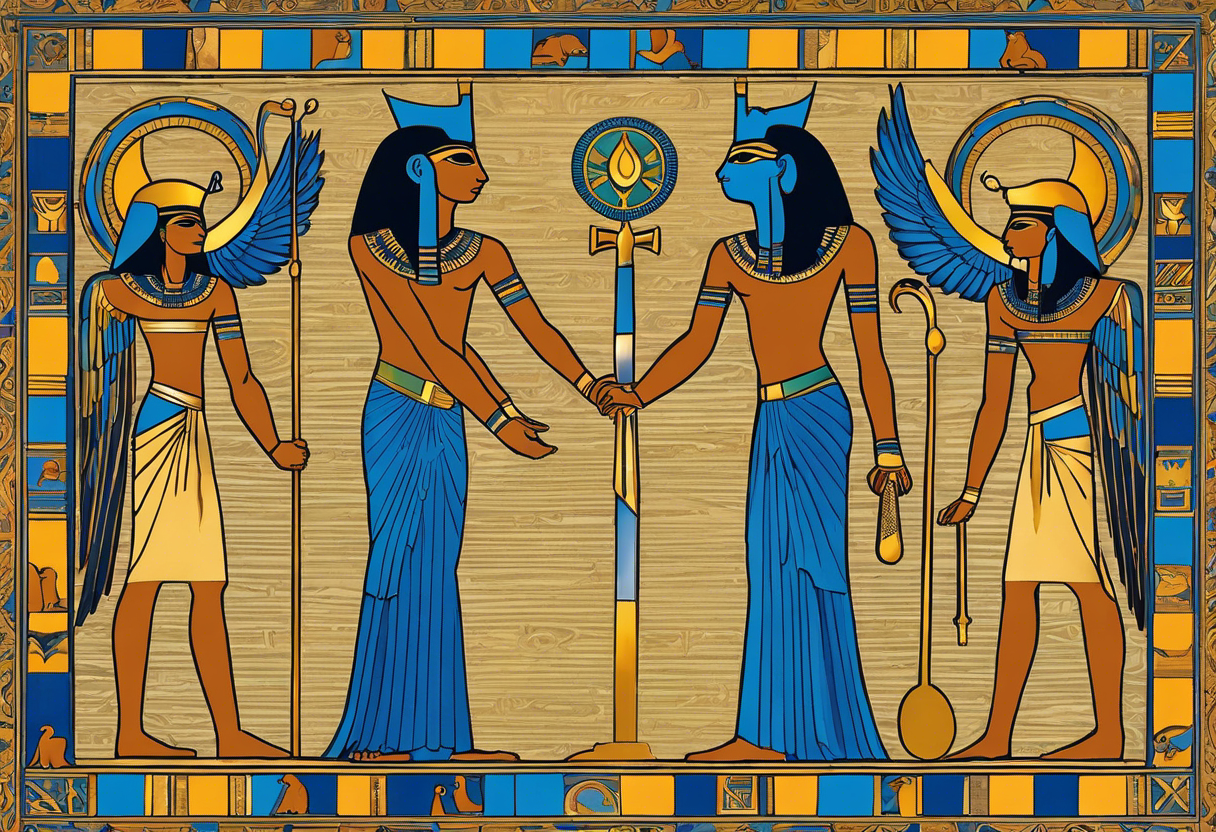
Ancient Egyptian deities were often depicted in various forms and symbols, each carrying its own unique meaning and significance. The symbolism and iconography associated with these gods and goddesses were of great importance as they conveyed the specific attributes and roles of each divine being in religious and mythological narratives. Understanding the symbolism and iconography of Egyptian deities can provide valuable insights into the ancient Egyptian belief system and cultural practices.
Animal Forms and Associations
One significant aspect of the symbolism of Egyptian deities is their association with specific animals. These animal forms served as a key identifier of the deity and provided clues about their nature and powers. For example, the falcon-headed god Horus represented divine kingship, protection, and the sky. The lioness-headed goddess Sekhmet embodied the fierce and destructive aspects of the sun. The ibis-headed god Thoth, with his association with writing and wisdom, was often depicted in the form of an ibis or a baboon.
Human and Hybrid Forms
Most Egyptian deities were represented in human form, often with symbolic elements or attributes. These attributes could be clothing, headdresses, or physical features that conveyed specific meanings. For instance, the double crown represented the united kingdom of Upper and Lower Egypt, worn by gods like Amun-Ra and Osiris to signify their sovereignty. Another example is the serpent-shaped uraeus, worn on the foreheads of gods and pharaohs as a symbol of divine power and protection.
Some deities, known as hybrid beings, combined human and animal characteristics. One notable example is Anubis, the god of embalming and the afterlife, who was depicted with the head of a jackal and the body of a man. These hybrid forms were believed to possess the qualities and powers of both human and animal realms, emphasizing the diverse roles and functions of the gods.
Symbolic Objects and Sacred Emblems
In addition to their physical forms, Egyptian deities were often associated with specific objects and sacred emblems that held symbolic meanings. These objects could be weapons, tools, or items associated with their mythological stories or spheres of influence. An example is the crook and flail, held by gods associated with kingship and authority, such as Osiris and Ptah. The crook represented the shepherd's staff, signifying guidance and protection, while the flail symbolized the power and influence of the ruler.
Furthermore, the use of specific colors in the iconography of Egyptian deities was also of significance. Colors such as gold, representing divinity and eternal life, and green, symbolizing rejuvenation and fertility, were commonly associated with gods and goddesses.
Symbolic Representations in Art and Architecture
The symbolism and iconography of Egyptian deities were not restricted to statuary and temple reliefs. They permeated various forms of art and architecture, including murals, jewelry, and tomb decorations. The use of symbolism in these depictions aimed to convey the presence and power of the gods and reinforce their connection to broader cultural and religious beliefs.
In conclusion, the symbolism and iconography of Egyptian deities played a vital role in conveying their attributes, roles, and relationships within the ancient Egyptian belief system. The animals, hybrid forms, symbolic objects, and sacred emblems associated with these gods and goddesses enabled worshippers and viewers to comprehend their complex mythology and understand their significance within the cosmic order.
Worship and Rituals Associated with Egyptian Gods and Goddesses
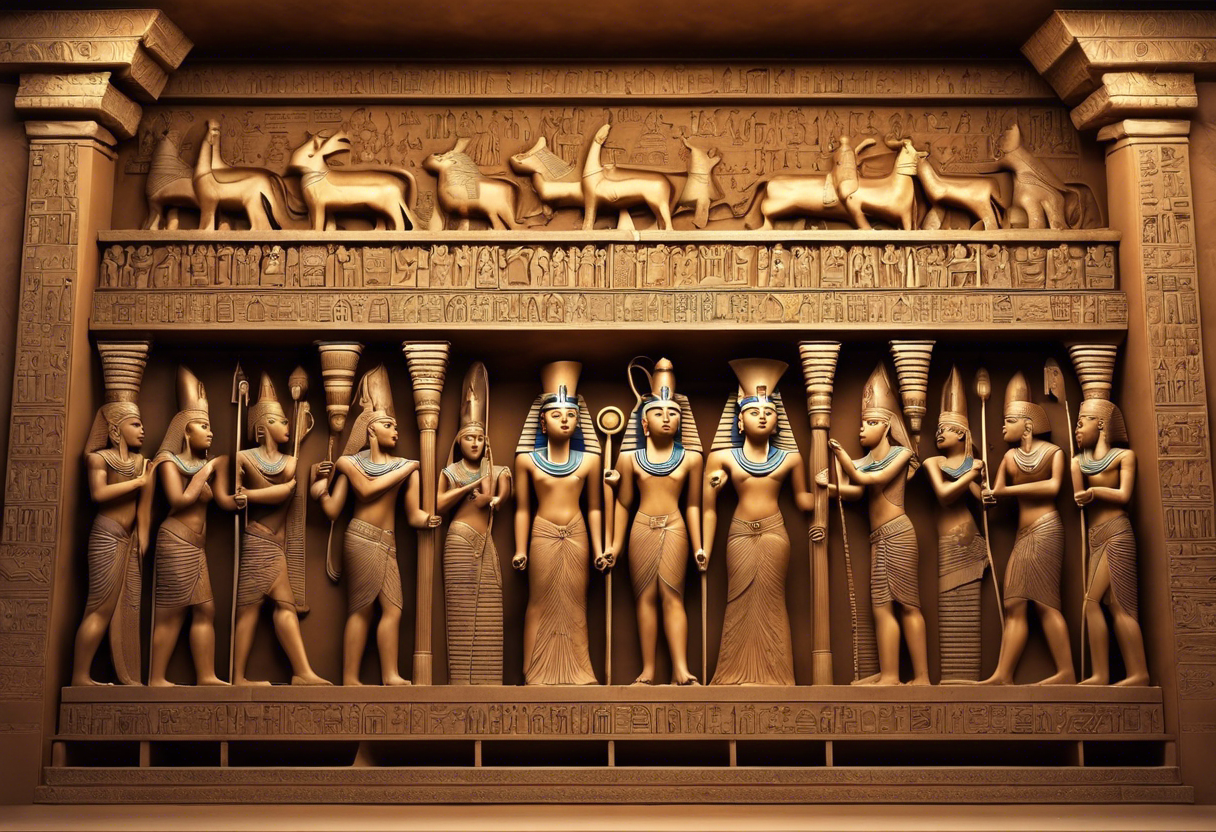
The ancient Egyptians had a deep devotion to their gods and goddesses, and they expressed their reverence through elaborate worship rituals. These rituals were an essential part of their daily lives and were believed to maintain the cosmic order and ensure the well-being of the entire kingdom.
Temples and Shrines: The Egyptians built magnificent temples dedicated to their gods and goddesses. These temples were considered the dwellings of the deities and were beautifully adorned with statues, frescoes, and inscriptions. People visited these temples regularly to offer prayers and make offerings to the gods.
Offerings: Offerings played a central role in Egyptian religious practices. These offerings included food, drink, incense, and various other goods. It was believed that by providing sustenance to the gods, they would in turn bless and provide for their worshippers.
Festivals: Festivals were held throughout the year to celebrate specific gods and goddesses. These festivals often included processions, music, dancing, and dramatic performances. They were occasions for the community to come together and honor the deities, ensuring their continued protection and favor.
Rituals and Ceremonies: The priests and priestesses performed intricate rituals and ceremonies in the temples. These rituals involved purification, recitation of prayers and hymns, and the symbolic reenactment of key mythical events. The priests acted as intermediaries between the gods and the people, ensuring the proper communication and offerings were made.
Sacrifices: Sacrifice was an important aspect of Egyptian religious practice. Animals such as cattle, sheep, and birds were ritually slaughtered and offered to the gods. These sacrifices symbolized the renewal of life and the reciprocal relationship between the gods and humans.
Oracles and Divination: Egyptians sought guidance from their gods through oracles and divination practices. Priests or priestesses would interpret signs and omens, consult sacred texts, or enter into a trance-like state to communicate with the gods and receive their guidance.
Personal Worship: Individuals also had a personal relationship with the gods and practiced their own form of worship. They would have small shrines in their homes, where they would offer prayers and make offerings to their chosen gods and goddesses. This allowed individuals to seek protection, guidance, and blessings for themselves and their families.
It is important to note that Egyptian religion was highly ritualistic and deeply ingrained in daily life. The worship of the gods and goddesses was not confined to the elite or the priesthood but was widely practiced by all levels of society. Through these rituals and offerings, the ancient Egyptians aimed to maintain a harmonious relationship with their deities and ensure the continued prosperity and stability of their civilization.
Cultural and Historical Perspectives on Egyptian Deities
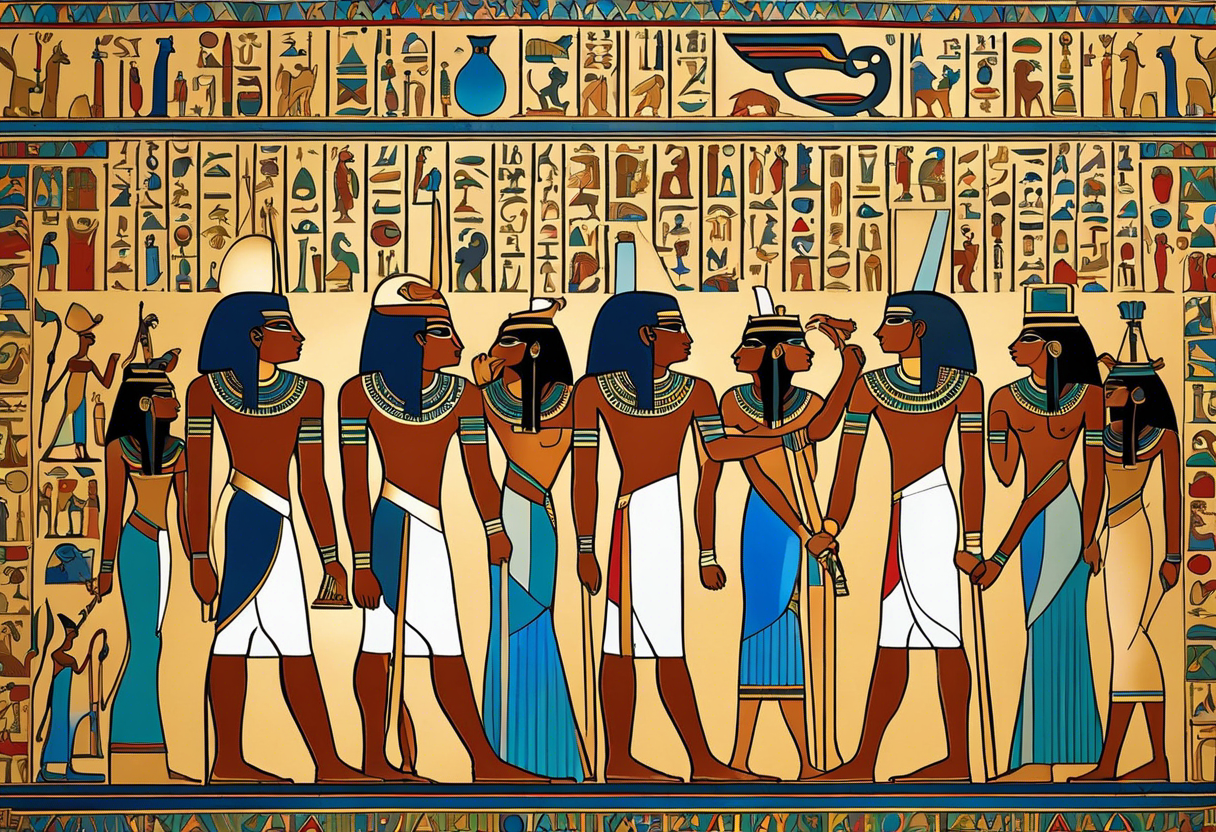
The pantheon of Egyptian deities is not only a rich collection of gods and goddesses but also holds significant cultural and historical importance. These deities played a central role in ancient Egyptian religion and society, shaping the beliefs and practices of the people.
Importance in Egyptian Religion
Egyptian deities were considered to be divine beings who had control over various aspects of life, such as natural forces, emotions, and human activities. Worshiping these gods and goddesses was an integral part of ancient Egyptian religious practices. The Egyptians believed that by appeasing and honoring these deities, they could ensure balance, order, and prosperity in their lives.
Symbolism and Representation
Each Egyptian deity was associated with specific symbols and representations that depicted their unique characteristics and powers. For example, Ra, the sun god, was often depicted with a sun disk on his head, symbolizing his association with the sun. The goddess Isis, on the other hand, was commonly shown with a throne on her head, representing her role as the queen of the gods.
Mythology and Stories
The Egyptian deities had an elaborate mythology surrounding them, which explained their origins, relationships, and interactions with other gods and humans. These stories served as a way to convey moral lessons and religious teachings to the ancient Egyptians.
One such example is the myth of Osiris and Isis. Osiris, the god of the afterlife, was murdered by his brother Set, but Isis, his wife and sister, managed to revive him briefly. This myth symbolizes the eternal cycle of life, death, and rebirth and reinforces the Egyptian beliefs about the importance of the afterlife.
Influence on Art and Architecture
The worship of Egyptian deities had a profound impact on the art and architecture of ancient Egypt. Temples dedicated to specific gods and goddesses were constructed, adorned with intricate carvings and paintings depicting the deities and their stories. These structures served as sacred spaces where the Egyptians could worship and communicate with their gods.
The artistic representations of the deities also helped convey their divine attributes and powers to the people. The skill and craftsmanship of ancient Egyptian artists are evident in the intricate details and symbolism present in the statues, reliefs, and murals depicting the gods and goddesses.
Enduring Legacy
Even though ancient Egyptian religion eventually declined with the rise of Christianity and Islam, the cultural and historical importance of the Egyptian deities remains. These divine beings continue to capture the imagination and interest of people worldwide, symbolizing the ingenuity, spirituality, and rich mythology of ancient Egypt.
The study of Egyptian deities provides invaluable insights into the religious, social, and cultural practices of the ancient Egyptians. It allows us to better understand their worldview and the profound impact that religion had on every aspect of their lives.
Comparative Analysis: Egyptian Deities in Other Mythologies
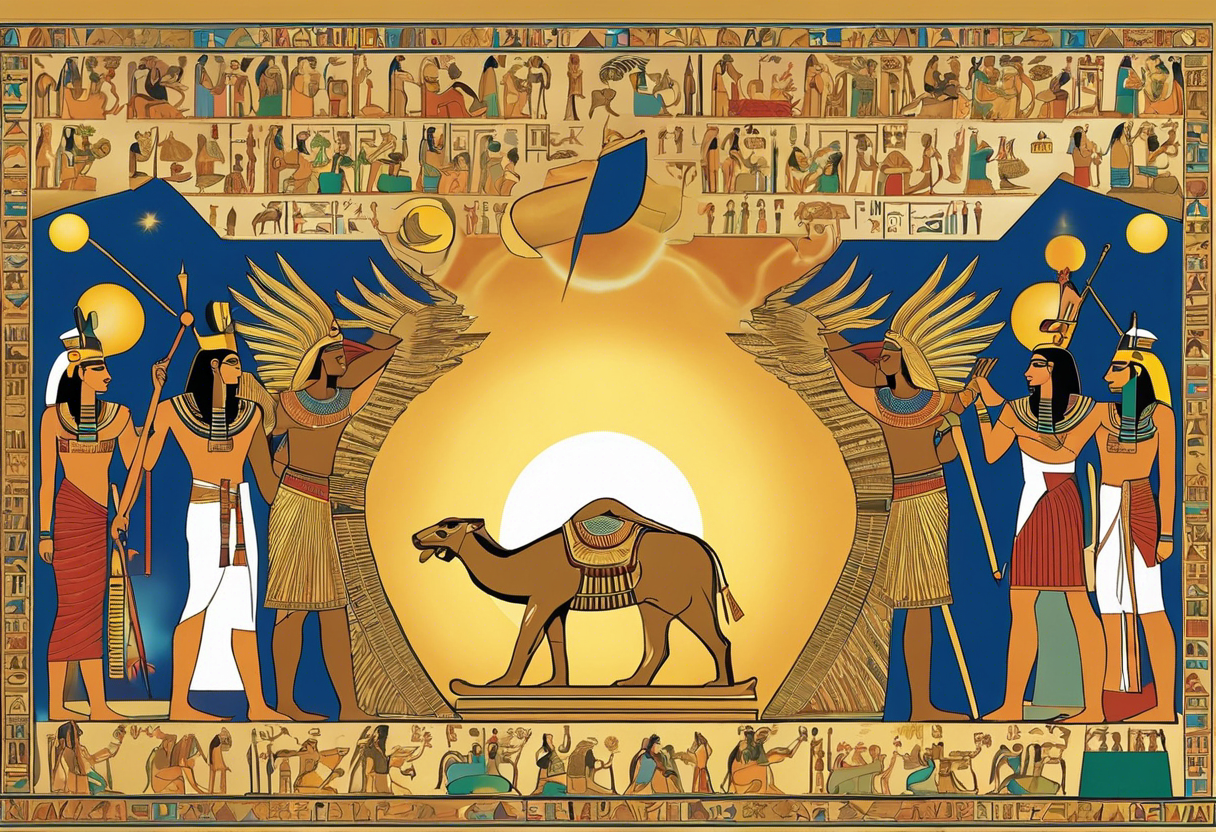
The pantheon of Egyptian gods and goddesses has had a significant influence on many other mythologies and belief systems throughout history. Their enduring qualities and archetypal symbolism have led to their incorporation into various cultures and religions. This section will provide a comparative analysis of Egyptian deities appearing in other mythologies, shedding light on the cross-cultural connections and shared motifs.
Horus: In ancient Egyptian mythology, Horus was the falcon-headed god of protection and the sky. He was often depicted as the son of Osiris and Isis and played a major role in the Osiris myth and the struggle against Seth. Interestingly, Horus has parallels in other mythologies. For example, in ancient Greek mythology, the god Apollo shares similar attributes with Horus. Both gods were associated with the sun, light, and protection. Apollo was also depicted as a youthful and radiant figure, much like Horus.
Thoth: Thoth, the ibis-headed god of wisdom and writing, also made an impact beyond Egypt. In Greek mythology, the god Hermes bears striking resemblances to Thoth. Both gods were associated with writing, communication, and invention. Hermes was known as the messenger of the gods and the patron of travelers, much like Thoth. The Roman god Mercury also demonstrates similarities to Thoth and Hermes. The inclusion of Thoth in other mythologies suggests the universal appeal of knowledge and intelligence.
Isis: Isis, the goddess of magic, motherhood, and fertility, held a prominent position in ancient Egyptian religion. Her influence, however, extended far beyond Egypt. Isis was one of the first Egyptian deities to be introduced to the Greco-Roman world, where she gained popularity and reverence. In fact, her worship spread throughout the Mediterranean and even reached as far as England. Isis's association with motherhood and protection resonated with many cultures, and she became revered as a universal mother figure.
Anubis: Anubis, the jackal-headed god of mummification and the afterlife, also found a place in other mythologies. In Greek mythology, the god Hermanubis emerged as a combination of Hermes and Anubis. This hybrid deity symbolized the process of transitioning from life to death. Furthermore, Anubis's role as the guide of souls in the afterlife holds similarities with the Greek god Hades, who ruled the underworld. The incorporation of Anubis into other mythologies exemplifies the fascination with death and the concept of an afterlife.
These examples demonstrate the diffusion of Egyptian deities into other mythologies. The characteristics and roles of Egyptian gods and goddesses resonated with different cultures, leading to the assimilation and integration of these figures into diverse belief systems. This cultural exchange highlights the interconnectedness of ancient civilizations and the shared themes and concepts that shaped human understanding of the divine.
The Legacy of Egyptian Gods and Goddesses in Modern Times
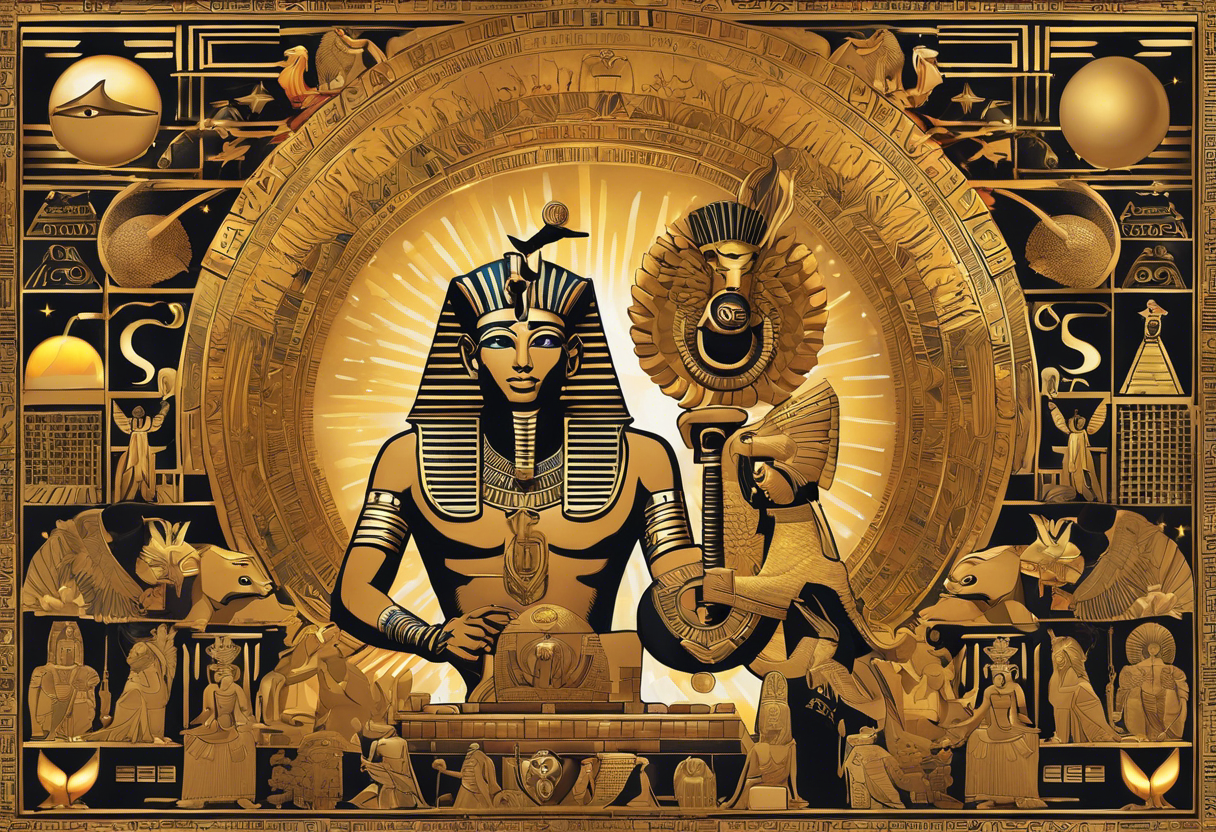
The ancient Egyptian gods and goddesses continue to have a significant impact on modern times, despite the passage of thousands of years. Their lasting legacy can be seen in various aspects of contemporary culture, such as art, literature, and spirituality.
Art and Aesthetics
One of the most noticeable influences of Egyptian gods and goddesses can be seen in art and aesthetics. The distinctive imagery of deities like Ra, Isis, and Osiris has been recreated in paintings, sculptures, and jewelry. Their iconic representations, such as the falcon-headed Horus or the feline goddess Bastet, have become popular symbols associated with ancient Egypt.
Egyptian-inspired motifs can be found in modern fashion, interior design, and even tattoo art. The enigmatic allure of Egyptian deities continues to captivate artists and designers, providing a source of inspiration for creating visually stunning and mystic works of art.
Literature and Pop Culture
The mythology and stories surrounding Egyptian gods and goddesses have also found their way into modern literature and pop culture. Numerous books, novels, and graphic novels have incorporated elements from ancient Egyptian mythology into their narratives. Famous works such as "The Kane Chronicles" by Rick Riordan and "River God" by Wilbur Smith feature Egyptian deities as central characters, introducing their stories to a wider audience.
Even in the realm of cinema and television, Egyptian mythology has made its mark. Movies like "The Mummy" series and TV shows like "Stargate SG-1" have explored the rich mythology of ancient Egypt, often with a modern twist. These adaptations not only entertain but also serve to keep the memory of Egyptian gods and goddesses alive in popular consciousness.
Spiritual Connection and New Age Movements
There is a growing interest in ancient Egyptian spirituality and its connection to modern-day practices. Many individuals turn to the deities of ancient Egypt for inspiration, guidance, and spiritual connection. This can be observed in the rise of neo-pagan and New Age movements that incorporate Egyptian gods and goddesses into their belief systems.
Devotees of Egyptian deities often engage in rituals, meditation, and prayer to establish a connection with the divine. They may invoke the names of gods and goddesses like Anubis, Hathor, or Thoth, seeking their blessings and wisdom. The popularity of Egyptian-themed tarot decks and oracle cards further illustrates the enduring appeal of these ancient deities in contemporary spirituality.
In conclusion, the legacy of Egyptian gods and goddesses lives on in modern times, leaving an indelible imprint on art, literature, and spirituality. Their imagery continues to inspire and captivate artists, their stories permeate modern literature and pop culture, and their presence can be felt in various spiritual practices. These ancient divine beings remain an enduring symbol of the rich and mystical Egyptian civilization, bridging the gap between the distant past and the present.
